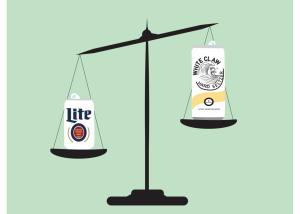A Look Into Our Defense Mechanism
The human immune system and its biological processes are integral in protecting us from pathogens
Lifestyle and diet changes can boost the immune system, which is important for fighting off illness.
March 3, 2022
The pandemic has highlighted the need for people to listen to their bodies and be able to strengthen their immune system through changes in lifestyle or diet. But trying to understand this complex system requires comprehension of the chain of defenses in our body that protect us from “invaders.”
Function of the Immune System
The immune system is a complex web of organs, white blood cells, proteins and chemicals that have evolved to protect organisms from pathogens such as bacteria, viruses and fungi. White blood cells are constantly on the lookout for pathogens. When they find a target, they start multiplying and sending signals to other cells around them. Lymphoid organs such as bone marrow, the spleen and the thymus — a gland just below our neck — are locations where we store our white blood cells.
Bone marrow contains two specific lymphocytes that help the body with memory and recognition of the same invaders. T lymphocytes (T cells) and B lymphocytes (B cells), along with embryonic stem cells, give rise to all the blood cells that are important to immune response.
This inflammatory response is the reason we develop fevers, as our tissues swell up to protect against pathogens.
Both B and T cells are made in bone marrow. However, T cells are transported and matured in the thymus, while B cells mature in bone marrow before needing up in the thymus. B cells make antibodies and signal T cells to destroy the invaders.
How the Body Attacks
In order to protect against infection, the body first detects the foreign invaders.
There are two types of molecular recognition pattern techniques: damage-associated and pathogen-associated. Damage-associated molecular patterns (DAMP) are activated when something goes wrong inside a cell, requiring the removal of the damaged or dying cells. On the other hand, pathogen-associated molecular patterns (PAMP) are initiated by detection of a pathogen that relays an immediate inflammatory response.
This inflammatory response is the reason we develop fevers, as our tissues swell up to protect against pathogens.
These different recognition patterns are associated with two types of immunity: innate and adaptive. Innate immunity is usually the first response against infection and starts a cascade of nonspecific immune responses to a pathogen.
A DAMP or PAMP is recognized by the innate immune system, in which a pathogen is engulfed by a phagocytic cell and produces an antigen unique to that pathogen. The immune system responds to this by sending a nonspecific innate immune response, as well as initiating the start of an adaptive immune response.
In the adaptive immune response, the antibodies are created against that specific antigen so that if this pathogen is reintroduced, it can be recognized more quickly and eliminated faster to prevent reinfection.
Between these two responses, the cells react quickly to eliminate the pathogen and remove damaged cells.
Boosting Your Immunity
Many foods and supplements help strengthen your body’s immune response and reduce inflammation in your body. Not only is eating a well-balanced diet essential, but incorporating beta carotene and vitamin C is also important.
Spinach, for example, is not only very rich in vitamin C but also in antioxidants and beta carotene. Similarly, garlic is recognized for having value in fighting infections, as it contains heavy concentrations of sulfur compounds such as allicin.
The dietitians at North Shore University HealthSystem advise everyone to incorporate turmeric and ginger juice shots into their daily meals, especially in the flu season. Both are types of flowering plants with medicinal properties, dating back to staples in herbal medicine. The presence of phenolic compounds, such as gingerol, is what makes them potent anti-inflammatory and antioxidant foods.
Our health reflects how well we are at repelling foreign pathogens. Our individual lifestyle and dieting choices affect how we build immunity and ward-off the worst of infections.
















